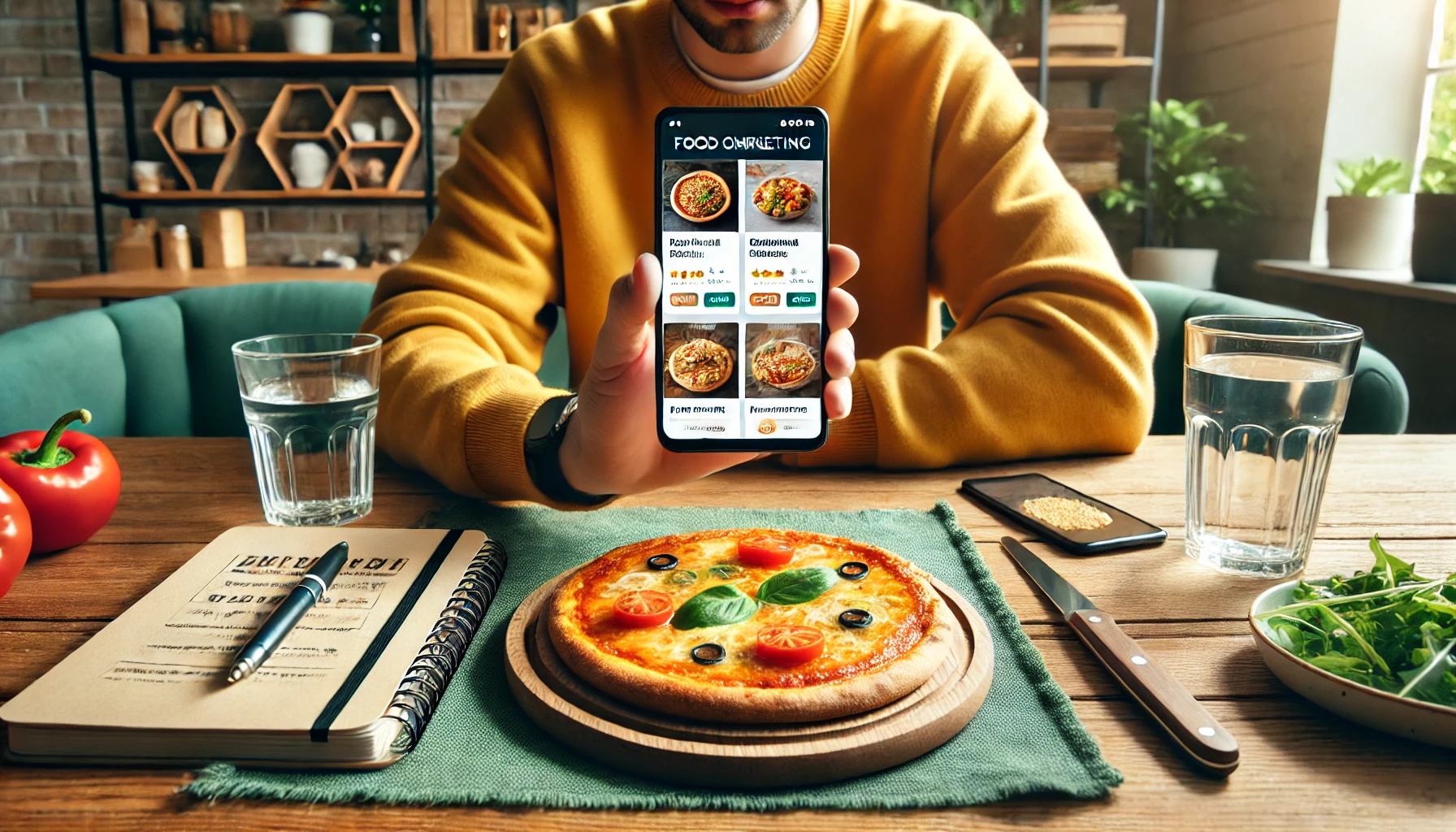In today’s digital age, foodies are flocking online to discover new flavors and find convenient ways to satisfy their cravings. This shift in consumer behavior presents a golden opportunity for food businesses to leverage the power of online marketing. By implementing effective strategies, you can reach a wider audience, build brand loyalty, and ultimately drive sales.
This blog post dives into the delectable world of online food marketing, providing you with the key ingredients for success. We’ll explore the benefits of marketing food online, outline actionable steps to get you started, discuss common challenges you might face, and delve into inspiring examples of successful online food marketing campaigns. Finally, we’ll whet your appetite for what the future holds in this ever-evolving landscape.
The Benefits of Marketing Food Online

There’s a smorgasbord of advantages to be gained by marketing food online. Here are just a few:
- Increased Visibility and Reach: The internet allows you to transcend geographical limitations and reach a much wider audience than traditional marketing methods.
- Targeted Marketing: Online platforms offer sophisticated tools to target your ideal customers based on demographics, interests, and online behavior. This ensures your message resonates with the right people.
- Building Brand Awareness: Consistent online marketing builds brand recognition and strengthens your position in the competitive food industry.
- Boosting Customer Engagement: Social media and other online channels foster two-way communication, allowing you to connect with your audience, address their queries, and build stronger relationships.
- Driving Sales and Conversions: A well-executed online marketing strategy can significantly increase website traffic, online orders, and ultimately, your bottom line.
- Measurable Results: Unlike traditional marketing, online campaigns provide valuable data and analytics that allow you to track performance, measure ROI (Return On Investment), and optimize your strategies for continued success.
Steps to Successfully Market Food Online
Now that you’ve grasped the appetizing benefits of marketing food online, let’s get cooking! Here’s a step-by-step guide to get you started:
- Know Your Target Audience: Before diving in, take time to understand your ideal customer. Who are you trying to reach? What are their preferences, dietary needs, and online behavior?
- Craft a Compelling Brand Story: Develop a unique brand narrative that resonates with your target audience. What makes your food special? Highlight your values, commitment to quality, and the story behind your culinary creations.
- Build a User-Friendly Website: Your website is your online storefront. Ensure it’s visually appealing, easy to navigate, and optimized for mobile devices. Include mouthwatering photos and videos of your food, a clear menu with detailed descriptions, and a seamless online ordering system.
- Embrace the Power of SEO: Search Engine Optimization (SEO) is crucial for ensuring your website ranks high in search results when people search for keywords related to your food offerings. Optimize your website content with relevant keywords and meta descriptions.
- Master Social Media Marketing: Social media platforms like Instagram, Facebook, and TikTok are powerful tools for showcasing your food, engaging with your audience, and running targeted advertising campaigns. Share high-quality visuals, post engaging content like recipes or cooking tutorials, and run contests and giveaways to generate excitement.
- Leverage Email Marketing: Build an email list and send out regular newsletters featuring new menu items, special offers, and loyalty programs.
- Partner with Food Bloggers and Influencers: Collaborate with food bloggers and social media influencers who share your target audience to spread the word about your food and reach a wider market.
- Run Paid Advertising Campaigns: Consider using paid advertising options on social media platforms and search engines to target specific demographics and increase brand awareness.
- Encourage Customer Reviews and Testimonials: Positive online reviews and testimonials from satisfied customers can significantly boost your credibility and attract new customers.
- Track and Analyze Your Results: Regularly monitor your online marketing performance through website analytics and social media insights. This data will help you identify what’s working and what needs improvement.
Common Challenges in Marketing Food Online
While the rewards of marketing food online are plentiful, there are also challenges to consider:
- Competition: The online food space is crowded. You’ll need to stand out from the competition with a unique brand identity and targeted marketing strategies.
- Maintaining Content Freshness: Keeping your online presence fresh and engaging with regularly updated content is crucial.
- Managing Online Reputation: Negative online reviews can damage your reputation. It’s essential to have a system in place to address customer concerns promptly and professionally.
Read- The Importance of Local SEO for Small Businesses in Udaipur
Examples of Successful Online Food Marketing Strategies
Let’s take a bite out of some inspiring examples of successful online food marketing campaigns:
- Domino’s Pizza: Domino’s embraced social media by launching an “AnyWare” ordering campaign. Customers could order pizza through various channels, including texting emojis. This innovative approach showcased their brand’s adaptability and convenience.
- Rajdhani Restaurants: This Indian vegetarian restaurant chain in India has mastered the art of online reputation management. They actively respond to customer reviews, both positive and negative, addressing concerns promptly and professionally. This commitment to customer service builds trust and encourages diners to share their positive experiences online.
These examples illustrate the power of creativity, targeted marketing, and audience engagement in marketing food online.
The Future of Marketing Food Online
The future of online food marketing is sizzling with exciting possibilities. Here are some trends to keep an eye on:
- Personalized Experiences: Expect to see a rise in personalized recommendations and targeted advertising based on individual customer preferences and dietary needs.
- The Rise of Voice Search: With the growing popularity of voice assistants like Alexa and Google Home, optimizing your online presence for voice search will be crucial.
- The Power of Influencer Marketing: Food influencers will continue to play a significant role in shaping consumer preferences. Partnering with the right influencers can be a game-changer for your online marketing strategy.
- Social Commerce: Ordering food directly through social media platforms will become increasingly seamless, making the customer journey even more convenient.
- Augmented Reality (AR) and Virtual Reality (VR): Expect innovative AR and VR experiences that allow customers to virtually interact with your menu and visualize portions before placing an order.
By staying ahead of these trends and embracing new technologies, you can ensure your online food marketing strategy remains fresh and effective in the ever-evolving digital landscape.
In conclusion, online food marketing offers a wealth of opportunities for businesses to connect with customers, build brand loyalty, and drive sales. By understanding your target audience, crafting a compelling brand story, and implementing effective marketing strategies, you can carve out your niche in the competitive online food space. Remember, the secret ingredients to success are creativity, consistency, and a willingness to adapt to the ever-changing digital world. So, fire up your marketing plan and get ready to dish up a winning online food marketing campaign!




